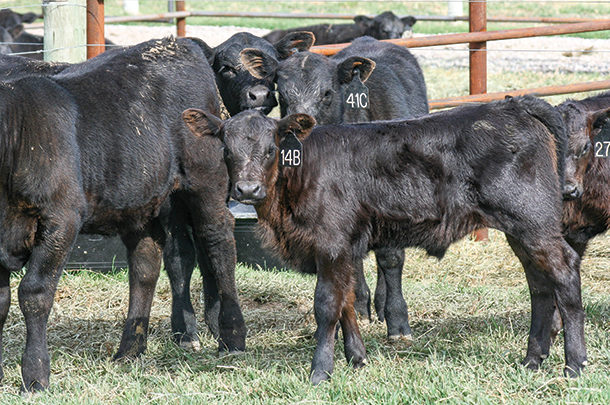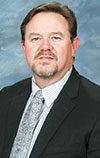For years, cattle producers have debated critical questions when it comes to deciding the type and size of cattle they will buy to go to grass or into the feedyard. Several major issues are of concern in making these decisions and include but are certainly not limited to:
- Background and type of animal initially purchased
- Cost of cattle at a given start weigh
- Health concerns of cattle starting at different weights
- Potential feed efficiency for animals fed from X in-weight to Y out-weight
- Market for cattle at a given out-weight in the future
To say that all the variables above (and others) are moving targets is an understatement. This article will discuss some of these variables that need to be considered when buying growing and finishing cattle.
Starting size and age considerations
One of the most basic challenges many feeder cattle buyers encounter is the massive inconsistency of cattle available at any given point through the varieties of sales mechanisms. Even on ranch cattle coming from a single source, there is genetic variation between animals that produce inconsistency of performance. One of the first things anyone growing or feeding cattle learns is: We “feed on the averages.” The industry targets an average degree of performance (average daily gain, feed efficiency, carcass performance) it believes it can live with. The unfortunate part of this is: The outliers, particularly those below average, some to an extreme, will majorly drain profitability for the overall group.
The 2017 Census of Agriculture reported that the average cow herd size in the U.S. is 43.5 head. Per the National Cattleman’s Beef Association (2019), the current cattle inventory is found on almost 728,000 operations across the U.S. This means the typical calf entering the sales and transition pipeline is likely to come from one of many small operations.
Many of these operations are very well managed – but, unfortunately, many are not. Starting at the transition point and working backward to the farm of origin, calves are produced in enormously varying conditions, with widely varying genetic makeup, as well as nutrition programs ranging all the way back to conception.
This is further affected by the size and age of the cattle at marketing. This can take various forms ranging from “calf feds,” cattle coming straight off the farm or ranch and going into the feedyard to feeder cattle that have been weaned and transitioned and potentially grazed or grown to different intermediate weights prior to placement in the feedyard.
Research and practice have shown that, in many cases, larger yearling cattle are more resilient to the transition process and may possess a more functional immune system. This is mainly because these larger animals are probably older and may have had more of an opportunity for exposure and immune response development. If they come off the same operation (i.e., were born, raised, weaned and grown to a given point on the same place), they likely were not exposed to “foreign” agents and given an opportunity to develop critical antibodies.
The younger/smaller the cattle are weaned or “transitioned,” the more likely they have a less optimally developed (experienced) immune system. Subsequently, this will result in higher rates of morbidity and the accompanying higher vet expense and treatment costs as well as death losses. This is also problematic for larger operations, where finding and maintaining a labor force experienced in dealing with these types of animals is increasingly difficult.
In these transition cattle, we also know bovine respiratory disease (BRD) is one of the major causes of sickness and death loss. BRD is endemic and one of the most common and costly diseases in grazing operations and feedlots, and has been for many years. BRD treatment costs have increased dramatically. In 2011, the National Animal Health Monitoring System (NAHMS) Beef Feedlot Study reports that the direct cost of treatment of respiratory disease in feedlot cattle was $23.60 per case, nearly double the reported cost in 1999 of $12.59 per case. It has increased dramatically since then.
Feed efficiency comparisons
The driver of most economics in growing and finishing operations is feed efficiency. While this is less well defined in grazing operations, feed efficiency and subsequent costs of gain can be captured with proper recordkeeping. Biologically, cattle are more efficient at smaller weights (unless severely mismanaged) and younger ages. A calf at 550 pounds will require less energy and overall nutrients (net intake) to gain 1 pound of tissue than an 850-pound calf. This feed efficiency declines even more dramatically as the animal is fed to even higher weights where less muscle is deposited in lieu of fat deposition and promoting an increase in carcass quality (as dictated by market valuation).
Additionally, overall feed efficiency for an animal fed from one weight to the other is also affected by genetics, previous management, feed formulation/energy density, environmental conditions (heat, cold, mud, snow), feeding management, bunk space, pen space, etc. Years of research has shown that all of these or any combination of these plus or minus have positive or negative effects on feed efficiency.
The benefits of growing/finishing lighter cattle are that the improved efficiency of the smaller, younger animal can improve the overall net efficiency at finish. Conversely, as discussed before, the smaller, younger animal may potentially be at greater risk for morbidity and mortality losses. Additionally, animals fed for a longer period of time can be more significantly subject to the variables (aside from genetics) listed in the previous paragraph.
Also as mentioned, more recent data suggests that there is an increase in morbidity and mortality costs in recent years. So there is a trade-off that must be considered: While feeding younger, lighter cattle lends itself to an overall improvement in net feed efficiency and the savings it brings, there is a risk of greater cost of medicine, treatments, labor and death loss in these younger animals.
On the opposite size, older, heavier cattle may be healthier and less prone to those losses, though they will be less efficient through the feeding period. Quantifying or predicting the economic implications of the aforementioned trade-off is challenging at best. Subsequently, the extended exposure of owning cattle for longer periods during the growing/finishing phases is also difficult to measure or predict given the host of unknowns, the greatest of these probably being environmental effects.
Higher end weights, longer ownership
Feeding to heavier end harvest weights has become a common practice. With this comes the reduced feed efficiency, as noted previously, and the downward pressure that places on economics. It also extends the amount of time a producer may own the cattle. With the increased exposure to performance variables also comes an increase in the interest cost, since cattle and feed are commonly financed. Again, there are more factors that must be considered when determining the initial size, age and weight of cattle at initial purchase.
Conclusions
The complexity of the issues raised here can be maddening. A variety of computer models exist that can help assess and compare the options, but none can effectively predict things like true genetic implications, weather effects or actual gain and health performance. Experience and research have taught us a lot, and this experience is invaluable and irreplaceable. It is truly fortunate to the beef industry that there are producers who have extensive knowledge and are willing to take the risks.








